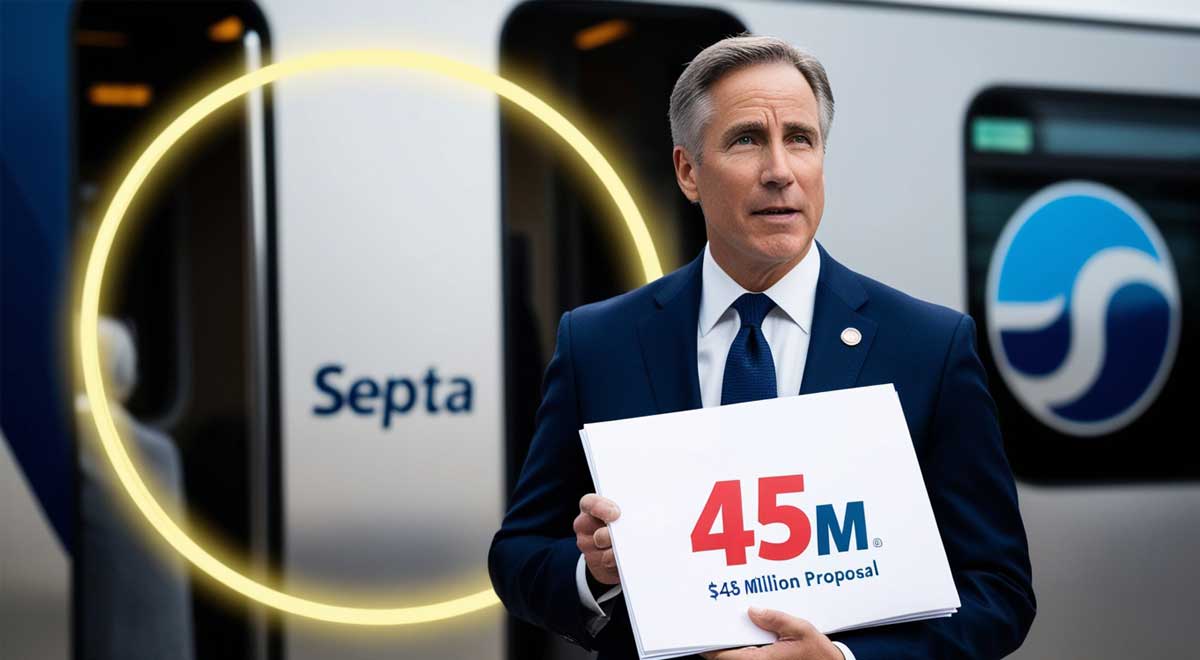DOVER, DE — Delaware Governor John Carney has unveiled a 45 million funding proposal to preserve SEPTA Regional Rail service into the state, aiming to avert a potential shutdown of the critical Wilmington/Newark Line as the transit agency faces a aiming to avert a potential shutdown of the critical Wilmington/Newark Line as the transit agency faces a 240 million fiscal cliff by July 2024. The plan underscores the line’s vital role in connecting Delaware to Philadelphia and the broader Northeast Corridor (NEC), while spotlighting challenges in sustaining interstate transit partnerships.
The Lifeline at Risk: SEPTA’s Wilmington/Newark Line
The Wilmington/Newark Line, part of the NEC’s Philadelphia-to-Wilmington segment, serves approximately 3,200 weekday riders across six stations in Delaware, with 70% of passengers hailing from the state. Operated by SEPTA but running on Amtrak-owned tracks, the line has linked Delaware to Philadelphia since SEPTA took over service from Conrail in 1983. Beyond commuters, the corridor also hosts Amtrak intercity trains and freight traffic, making it a multifunctional artery for the region.
However, SEPTA warns of drastic service cuts without new funding as federal pandemic aid dries up. The agency projects a 240 million annual shortfall starting in mid-2024, putting lower ridership lines like Wilmington/Newark, which requires a 240 million annual /Newark—which requires a 9 million annual subsidy, on the chopping block.
Carney’s $45 Million Rescue Package
Governor Carney’s proposal pledges $9 million annually over five years to cover SEPTA’s operating costs for the line, marking Delaware’s first direct subsidy to the Pennsylvania-based agency. Key elements of the strategy include:
- State Funding Commitment: The $45 million plan requires approval from Delaware’s legislature, which reconvenes in January 2024.
- Federal Grants: Advocacy for funds from programs like the Federal-State Partnership for Intercity Passenger Rail, which could support infrastructure upgrades.
- Partnerships with Amtrak: Leveraging shared use of NEC infrastructure to negotiate cost-sharing or efficiency improvements.
“This isn’t just a transportation issue—it’s about jobs, access to healthcare, and reducing traffic on I-95,” Carney stated. “We’re prepared to step up, but we need sustainable solutions.”
Stakes for Delaware: Economy, Equity, and Environment
Stakeholders warn that losing the line would have cascading impacts:
- Economic Disruption: Over 1,000 daily riders are commuters to Philadelphia, contributing to Delaware’s economy. Hospitals like ChristianaCare also rely on the line for staff and patient access.
- Environmental Toll: The service removes an estimated 15,000 cars daily from highways, cutting carbon emissions by 22,000 tons annually—a key metric for Delaware’s climate goals.
- Equity Concerns: Students at the University of Delaware and low-income workers depend on affordable transit. “This line is a lifeline for our community,” said Tri-State Advocacy Group director Liam Patel.
Hurdles to Preservation
The proposal faces significant challenges:
- Interstate Governance: SEPTA’s board includes only one Delaware representative, complicating funding negotiations.
- Amtrak’s Role: Upgrades require coordination with Amtrak, which prioritizes its own trains on the congested NEC.
- Political Will: Delaware lacks a dedicated transit fund, and legislators may balk at subsidizing another state’s agency.
SEPTA CEO Leslie Richards praised Delaware’s efforts but cautioned, “Without long-term funding, we can’t guarantee service.”
Next Steps and National Implications
Delaware’s Transportation Secretary Nicole Majeski will present the subsidy plan to SEPTA’s board in November, urging prompt action. Advocates are mobilizing riders to attend hearings and contact legislators.
The outcome could set a precedent for regional rail systems nationwide, particularly in multi-state corridors where funding responsibility is contested. “This is a test of whether states can collaborate to save transit,” said Federal Transit Administration advisor Elena Torres.
Conclusion: A Crossroads for Regional Transit
Governor Carney’s aggressive push highlights the fragility of transit systems reliant on patchwork funding. As Delaware and Pennsylvania navigate this high-stakes negotiation, the Wilmington/Newark Line’s fate will signal whether bipartisan cooperation can prevail over fiscal austerity—and if the NEC can evolve beyond a passenger rail “survival mode.”

